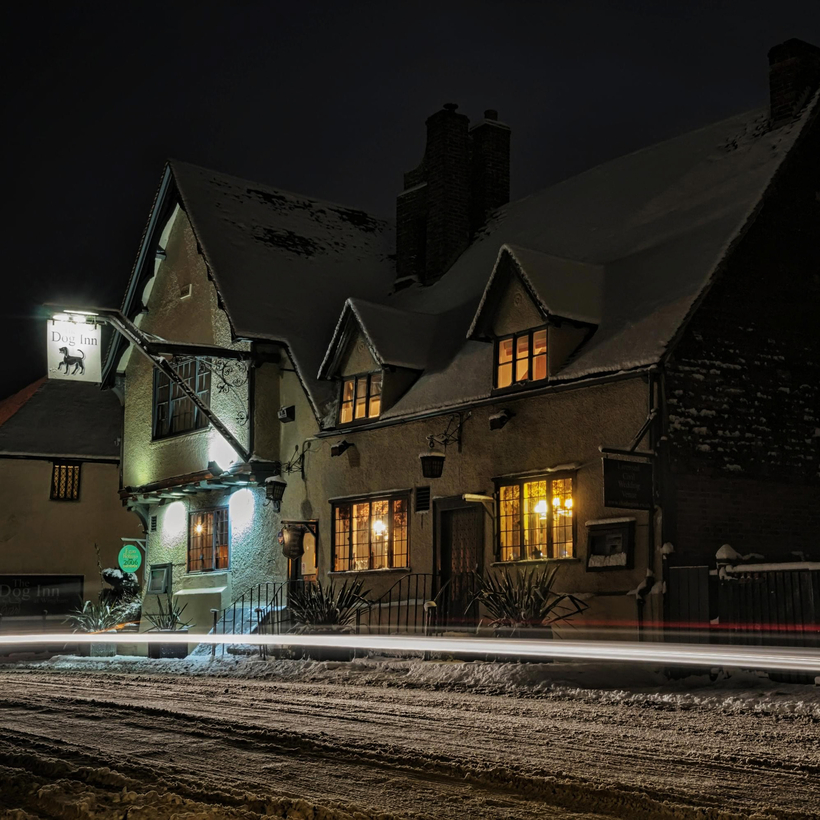An “If you like this, then you might like this” algorithm probably wouldn’t pair English writer Janice Hallett with Oklahoma City’s Lou Berney. Superficially, they don’t have much in common.
When it comes to style, Hallett is the more unconventional. She’s created an idiosyncratic epistolary method that involves assembling e-mails, text messages, group chats, legal documents, and so on, into meticulously constructed narratives. The dysfunctional group dynamic is key to Hallett’s books, whether acted out by a community-theater troupe or the students in a master’s art program.
Berney, who writes in colloquial, conversational, hilarious prose, has an eye for the grit and sleazy splendor of the small-time American criminal class. He is less a tricky plotter than a chronicler of a certain type of hapless but enthusiastic individual, often a crook, whose wholehearted belief in their talents is completely unwarranted.
Both writers share an essential sweetness and generosity of spirit toward even their most ridiculous and self-deluding characters; their satire is no less effective for its lack of cruel intent.
The pub-quiz scene (“bar trivia” to Americans) in rural England that provides the setting for The Killer Question is informed by Hallett’s own experience on a quiz team, and I bet she’s an ace. The book’s framing device is a pitch to a production assistant at Netflix from a young man named Dominic Eastwood for a true-crime documentary about his aunt and uncle, who were once police officers. He doles out the story in increments designed to whet the assistant’s appetite for more.
We learn that after undistinguished careers in policing, a couple named Sue and Mal Eastwood became the landlords of the Case Is Altered pub, a dingy spot with limited prospects at the end of a dark road. Since all its sister pubs in the area put on a weekly quiz night, the couple started their own. Everything went well enough, until a new team called the Shadow Knights showed up and proceeded to consistently blow the others out of the water. Mal, who set the quizzes himself, suspected cheating but couldn’t find any evidence of it. And then a man was found dead in the river nearby and identified as a drifter whose only crimes seemed to be rowdiness and cheating at the quizzes.
It’s obvious why he’d have to. The categories for Mal’s quizzes aren’t for dilettantes—Name All 48 Ceremonial Counties of England; On This Day in 2002; Break a Leg: Sports Injuries Special. The intrigues of the quiz competition—strategies, poaching, inter-team relationships—are so compelling that you can miss clues hidden in plain sight. Hallett is a master of misdirection, nudging us toward the mystery of the Shadow Knights so that our focus on peripheral matters relaxes. There are twists aplenty in The Killer Question, but the big one near the end is a well-earned shocker that makes you rethink everything that came before it.
It’s no surprise where Berney’s characters are headed in Crooks: “Mercurios don’t play by the rules … Mercurios make up their own rules, follow their own laws. They’re born pirates, outlaws, rogues, and desperadoes. It’s in their blood.” That’s the proud family credo of low-level Las Vegas mobster Buddy Mercurio. He and his wife, Lillian, flee Vegas after crossing his bosses, ending up in Lillian’s hometown of Oklahoma City, where they start a family. After working a few demeaning jobs, he puts all his chips into a disco that becomes an unlikely success. The Mercury Lounge is where his school-age kids—Ray, Jeremy, Alice, and Tallulah—begin their careers in crime, with only toddler Paul too young to help out.
The highly entertaining rise and fall of the disco serves as the springboard for discrete sections devoted to the mostly criminal trajectories of each child, from the 80s through 2015. Golden boy Jeremy’s misguided attempts to become a con artist/gigolo in Los Angeles make up the first and funniest part, because while he knows how to give the ladies what they want, his marks are smarter than he is.
Hyperactive Tallulah’s stint as an acrobat in a troupe that works parties in 1990s Moscow is a bit of a stretch, so it’s a slight relief to follow Ray’s life in Las Vegas as muscle for a slimy club owner. Ray is a taciturn enigma, but his arc reveals unexpected depth and ambition.
Over-achieving Alice, who strays from the family business to become a lawyer, is forced to do a favor that takes her off the grid in a hallucinatory episode that will change her life. Only Paul has anything approaching a normal life, as an English professor.
Through this picaresque family portrait, Berney creates a vibrant patchwork of neon-lit, turn-of-the-20th-century America in all its semi-criminal glory: the disco phenomenon, the Los Angeles porn industry, the Disneyfication of Las Vegas, the expansion of the drug trade, and more. The Mercurio family values are definitely skewed, but they make for an exuberant ride on the wild side.
Even though the series works directly from Georges Simenon’s books featuring his iconic Parisian detective, Jules Maigret, this Maigret takes some getting used to. It’s set in the present day rather than the early to mid-1900s, and the actors are English, pronouncing the detective’s name “may-gray,” with a slightly resentful drawl.
In a time when audiences have easy access to a wide range of foreign-language TV series and films, and resistance to subtitles has worn down, you’d think a thoroughly French, period-proper Maigret might work. But hold on—such a series ran on French TV quite successfully for 14 seasons, from 1991 to 2004. There was even a British stab at it about 10 years ago with Rowan Atkinson (!) as Maigret, which may have been too much of a leap.

So now we have this updated hybrid, with an attractively scruffy Benjamin Wainwright trying on Maigret’s gravitas and reserve like the heavy winter coat worn by the original Maigret. This Maigret has a hipster-y plaid wool coat that he wears regardless of the weather, so check that box. The pipe smoked by literary Maigret here becomes a talisman from his dead father, which he fiddles with like worry beads. Naturally, the stories adopt modern technology and cultural changes—one of the characters in “Maigret’s Failure” is a teenage influencer. Mrs. Maigret (Stefanie Martini), who’s been upgraded from housewife to doctor, has a big presence in the series.
The creators do try to respect the spirit, if not the letter, of the books. With 75 to choose from, they’ve adapted three into two episodes each this season: besides “Maigret’s Failure,” there’s “The Lazy Burglar” and “Maigret Comes Home.” The last allows them to devote time to Maigret’s origin story, as the son of the estate manager at Saint-Fiacre and his relationship with its troubled châtelaine, who was like a mother to him as a boy. This brings some needed depth to the character.
If you’re attached to the books, you just have to let go and see whether you can accept this effort on its own terms. Paris has changed since Simenon’s time, so the look and the atmosphere are worlds away from the haunted, shadowy ambience that was such an important component of the novels. Now people can swim in the Seine, and, until recently, a huge balloon rose nightly from the Olympic cauldron. How well Jules Maigret fits into this Paris is questionable, but Wainwright’s unwavering gaze and private certitude might grow on you regardless.
Lisa Henricksson reviews mysteries for Air Mail. She lives in New York City

